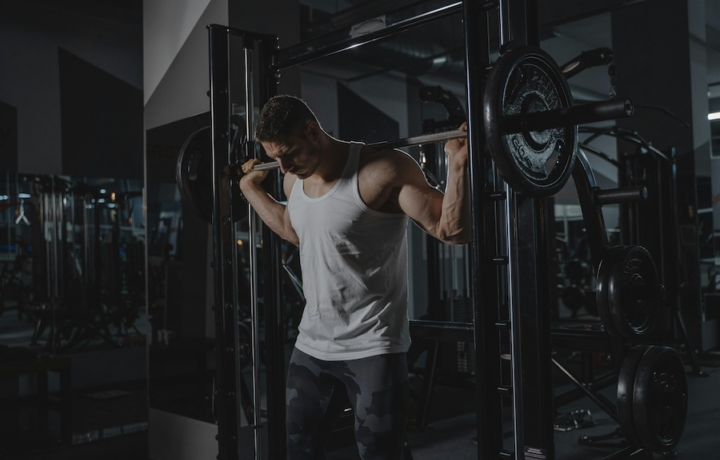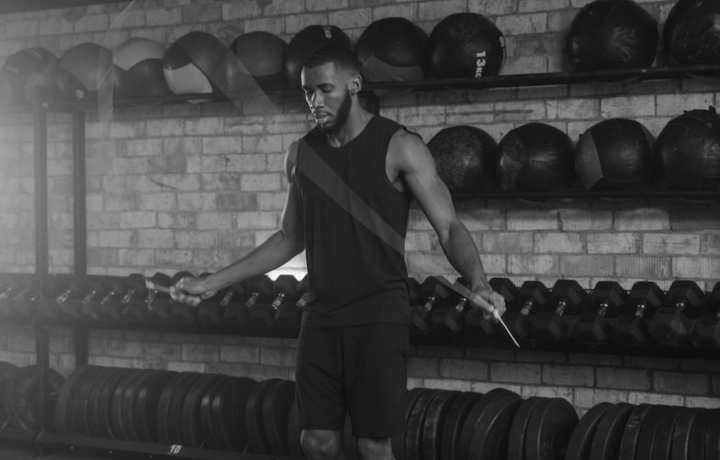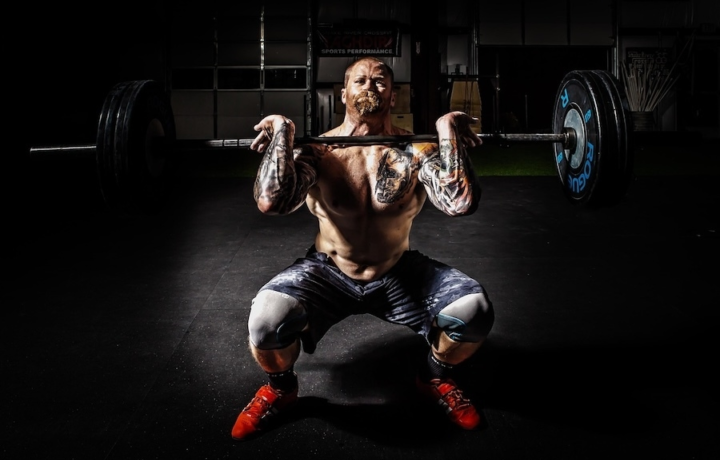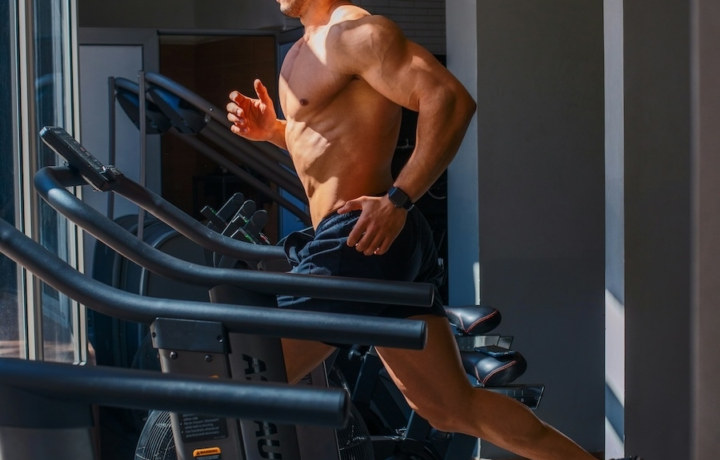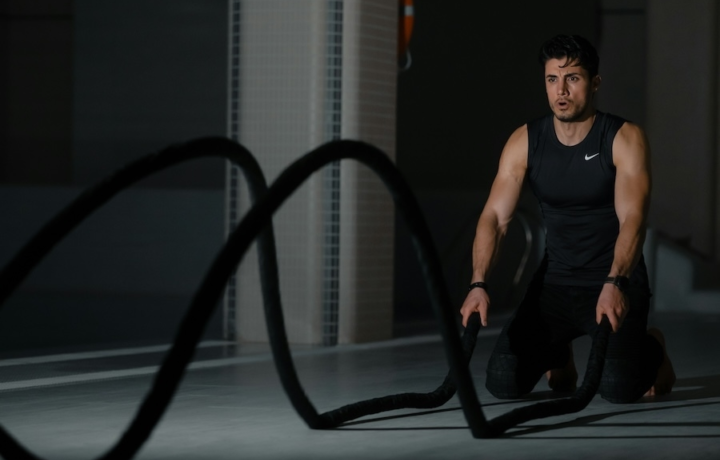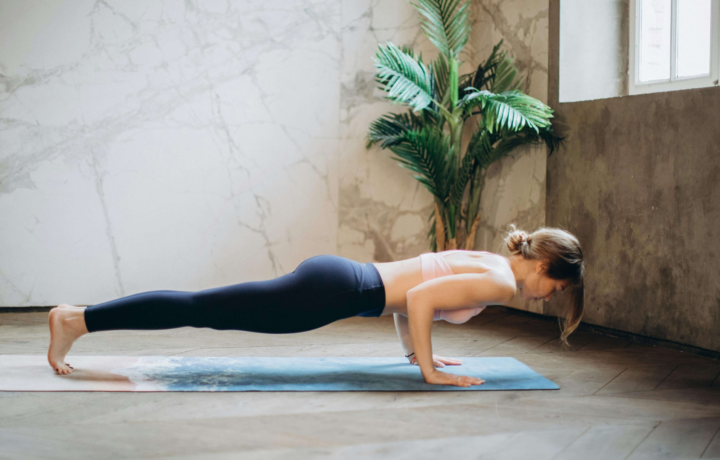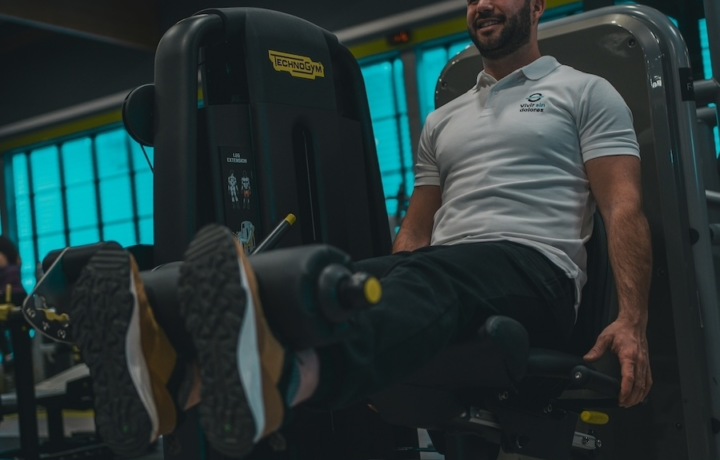Exercise
Jump Squat

Jump Squat
How to Perform
- Stand with your feet slightly wider than shoulder-width apart and toes slightly turned outward, keeping your shoulders back, chest up and core engaged.
- Begin to lower your body by bending at the knees and hips as if sitting in a chair, ensuring your knees track in line with your toes.
- Lower until your thighs are parallel to the ground or slightly lower, while keeping your back straight and weight in your heels.
- Inhale during the descent, maintaining tension in your core to protect your spine.
- From the bottom position, explosively push through your heels and midfoot to propel your body upward, exhaling forcefully as you jump.
- Extend your knees and hips completely at the top of the movement, reaching for the ceiling with your arms for added momentum.
- Land softly by bending your knees and absorbing the impact through your legs, immediately transitioning into the next repetition.
- Control the landing by distributing your weight evenly across both feet and returning to the squat position with proper alignment.
Important information
- Keep your chest up throughout the entire movement to prevent rounding your back, which could lead to injury.
- If you're new to jump squats, start with regular bodyweight squats before progressing to the jumping variation.
- Make sure your knees don't cave inward during the landing phase – actively push them outward in line with your toes.
- Land as quietly as possible, which indicates you're absorbing force properly through your muscles rather than your joints.

Jump Squat
Exercise Details
Primary Muscles
Muscle Groups
Mechanic
Built for progress
Take the guesswork out of training
Create personalized AI-powered workout plans that evolve with you. Train smarter, track every rep and keep moving forward, one workout at a time.






The jump squat stands as a dynamic powerhouse in any fitness routine, merging the strength-building benefits of traditional squats with explosive plyometric movement. This intermediate-level exercise simultaneously targets multiple lower body muscle groups, primarily engaging the quadriceps, glutes, and calves through a combination of controlled descent and explosive ascent.
Popular in both HIIT and CrossFit programming, jump squats serve as an excellent metabolic conditioning tool that elevates your heart rate quickly while building functional power. The beauty of this exercise lies in its versatility—it can be incorporated into circuit training, used as a finisher, or programmed within complex training protocols that pair strength movements with plyometrics.
The exercise's high-intensity nature makes it particularly effective for developing muscular endurance and cardiovascular capacity. As you progress through multiple repetitions, you'll notice the dual challenge of maintaining proper form while fighting through the burning sensation in your legs—a hallmark sign that you're building muscular endurance. Meanwhile, your cardiovascular system works overtime to supply oxygen to your working muscles, creating that beneficial cardio training effect.
Research has demonstrated that incorporating plyometric exercises like jump squats into your routine can improve power output, vertical jump height, and even running economy. The neuromuscular adaptations that occur when regularly performing jump squats translate well to athletic performance across various sports and activities.
For those tracking fitness metrics, jump squats typically burn more calories than their static counterparts due to the increased energy demand of propelling your body weight against gravity. This makes them an efficient choice for those with limited workout time who want to maximize their results.
While challenging, the reward of mastering jump squats extends beyond aesthetic benefits—you'll develop real-world power that translates to improved performance in daily activities, recreational sports, and other fitness pursuits.
FAQ - Jump Squat
Jump squats primarily target the quadriceps, glutes, and calves, while also engaging your hamstrings and core as stabilizers. The explosive nature of the movement particularly emphasizes fast-twitch muscle fibers, making it excellent for power development.
Beginners can start with quarter squats and smaller jumps, gradually increasing depth and height as strength improves. For advanced variations, add resistance with dumbbells, a weighted vest, or increase intensity with higher jumps or single-leg variations.
Jump squats create significant impact forces and may not be suitable if you have existing knee problems or injuries. Consider lower-impact alternatives like box step-ups or weighted squats, and always consult with a healthcare provider if you have joint concerns.
Most effective protocols include 3-4 sets of 8-12 repetitions with adequate rest between sets (60-90 seconds). Quality always trumps quantity—as fatigue sets in, reduce reps rather than compromising form and landing mechanics.
The most common mistakes include rounding your lower back, rotating your hips instead of keeping them square, rushing through the movement, and not hinging properly at the hips. Focus on maintaining a neutral spine, moving with control, and keeping your standing knee slightly soft rather than locked.



